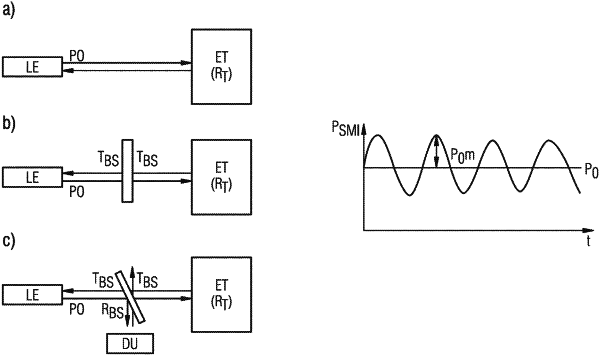| CPC G01B 9/02092 (2013.01) [G01B 9/02097 (2013.01)] | 19 Claims |

|
1. A self-mixing interferometry sensor module, comprising a light emitter, a detector unit and an optical element, wherein the light emitter is operable to:
emit coherent electromagnetic radiation towards an external object to be placed outside the sensor module; and
undergo self-mixing interference, SMI, caused by reflections of the emitted electromagnetic radiation from the external object back inside the sensor module; wherein the detector unit is operable to:
generate output signals indicative of an optical power output of the light emitter due to the SMI; wherein the optical element is aligned with respect to the light emitter such that:
a first fraction of electromagnetic radiation is directed towards the external target and/or the light emitter and a second fraction of electromagnetic radiation is directed towards the detector unit to generate the output signals, and such that
an optical power ratio of the first and second fractions meets a pre-determined value,
wherein the optical power ratio is further determined by shot noise associated with the detector unit and wherein a signal-to-noise ratio SNR(ACSMI,DU) of an AC component of the output signals generated by the detector unit (DU) yields
 P0·m′·TBS·cos θ·RBS P0·m′·TBS·cos θ·RBS 2 2 wherein F accounts for a relative intensity noise of the light emitter and B is a system bandwidth,
wherein TBS denotes a transmission of the optical element with respect to the first fraction of the electromagnetic radiation, and RBS denotes a reflection of the optical element with respect of the second fraction of electromagnetic radiation,
wherein P0 is the optical power output, m′ is a modulation factor that is a function of optical losses associated with the sensor module, and θ is a function of an optical field phase.
|